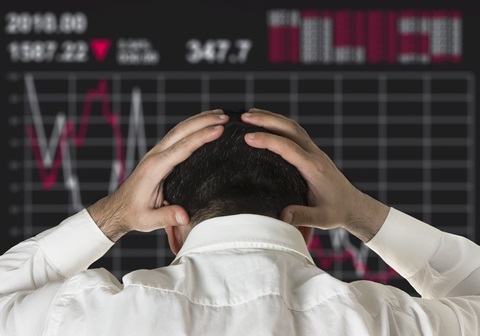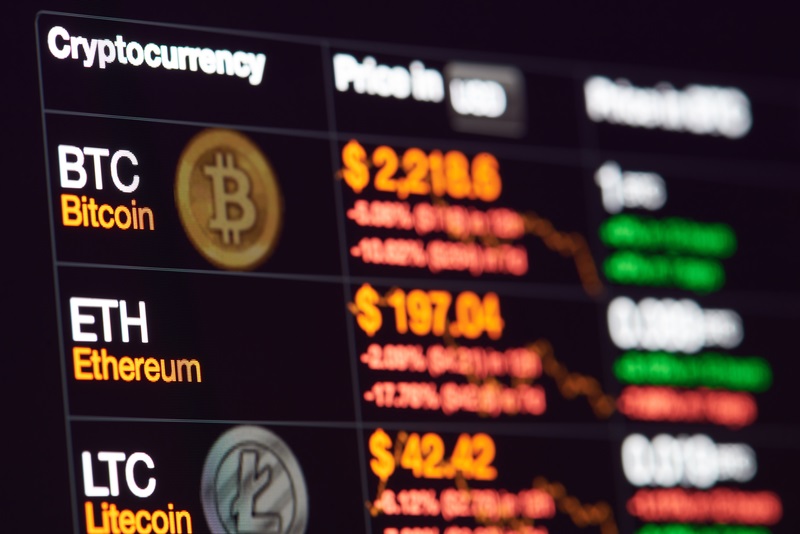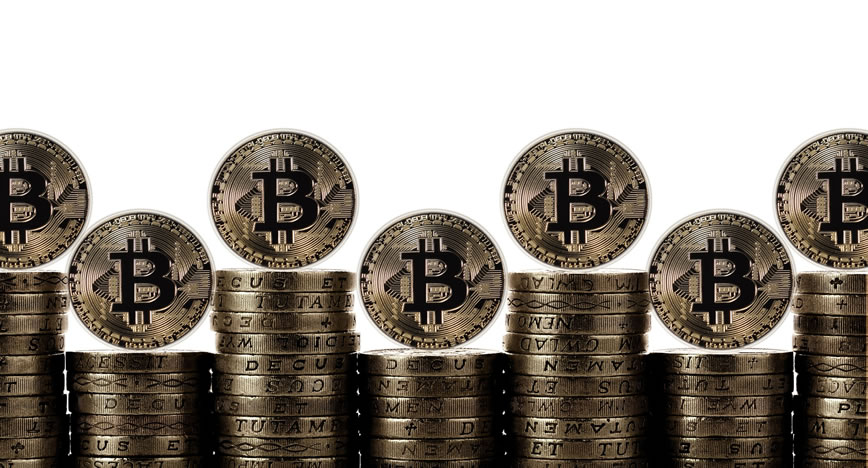Author: Soteris Phoraris
Market Commentator for easyMarkets
We frequently hear the idiom “The future is now!” especially in the age on the cusp of artificial intelligence, autonomous robotics, nanotechnology, mass adaptation of alternative energy and genetic medicine. We undeniably live in a very technologically exciting era and these breakthroughs definitely have the potential to completely change the way the world fundamentally works.
In honor of CES 2018 (Consumer Electronics Show) which just finished, I thought I’d take the time to look at technology with a different scope. I thought I’d consider the question most traders would ask when faced with change on a large scale: “how will this affect the markets?”
Well let’s take a look at how the markets were affected by significant technological advances in the past, what survived, what went up in smoke because of them and ultimately try to see what could be affected by the latest technological break-throughs.
History: Coal vs. Oil
The first type of energy source humanity had at its disposal was itself, I know that sounds redundant, but muscle power was the first type of locomotion – which I hear is really tiring. Luckily, we domesticated animals, found that the black rock stuff underground could be burned to create tons (joules actually) of energy and that the black goop erupting from underground could create even more. During the industrial revolution around the beginning of the 20th century, coal was the go to fuel and there were millionaires made because of it. Name any disgustingly wealthy family that existed before and during the industrial revolution and I can guarantee they had a hand in coal – Rockefellers? Rothschilds? Yes, as recently as the 2000s.
Still to this day coal mining is a vital form of income and source of employment for certain locations around the world – much of a certain person’s campaign (which shall remain anonymous) was based on the preservation of so-called “coal belt” jobs in lieu of an international environmental preservation pact – but I digress. Eventually oil came to replace coal as a primary energy source, due to its transportability, availability – but the true catalyst (!) for the mass adaptation of oil over coal was the internal combustion engine. The ease of having a liquid tank and a self-feeding engine instead of constantly having to shovel coal into a steam-engine helped this fuel-source immensely.
Although most people heavily invested in coal reinvested in oil, the shift did cost jobs within the industry, but new industries emerged covering the need for skilled or semi-skilled labor.
We have seen multiple technologies which could replace fossil fuels although none have proven to be as efficient or economic as their globe destroying counterparts. Hydrogen fueled cars seemed like a solid competitor, but the need for specialized infrastructure and their inability to compete autonomy-wise with gasoline driven cars has greatly stifled its popularity and mass adaptation. If a fuel type emerges or is optimized to be more efficient, more affordable and ultimately more convenient, then we might see both oil and coal go the way of the Dodo.
Electronics – Gold Fever
Although gold is still primarily used for jewelry, 10 -12% (depending on the source) of the world’s gold supply goes to the production of technology. The reason that percentage isn’t higher is probably due to the fact that a third of the gold used in new technology is actually recycled. Of course, we know gold is finite whereas technology continually evolves, thus the demand for gold is constantly increasing. For example, Mathew Neurock and Robert J. Davis of the University of Virginia have found a method using gold, to create “bio-renewable chemicals” that could replace petroleum based ones.
Of course, even gold’s use in tech might be reversed, with new material innovations such as graphene, which is promising to completely redefine circuit paradigms of today. This statement is going to seem superlative – but graphene is the most conductive material in the world, it is stretchable (which flexible circuits have been the holy grail of the tech industry for decades), 200 times stronger than steel and one of the thinnest materials known to humanity. It’s also impermeable, meaning it can create a protective, conductive but still stretchable protective layer over, well theoretically anything. Imagine a housing that is also the circuitry and battery of a smart-phone.
Yes, yes ‘how will this affect the markets?’. Currently, producing graphene is prohibitively expensive – the company or institution that manages to find a cost-efficient way to produce this hyper-material, and the foresight to patent it, it will at least initially, dominate the market – like DOW chemicals and Teflon, Westinghouse with alternating current infrastructure and Tesla with electric cars – on that note…
Autonomous cars everywhere
It seems that this year’s CES was dominated by self-driving cars, with a few other alternative fueled non-non-driverless cars (drivable?) including Hyundai’s hydrogen fuel cell car and Chinese manufacture’s first foray into electric cars – Byton.
Honda seemed to be the break-away autonomous vehicle producer, with two offerings, the awkwardly named 3E-D18 which looks like a futuristic four-wheel off-road vehicle which is a platform for various tools depending on the application from agriculture to bomb-disposal. Honda also introduced its NeuV which is slated as a “ride sharing” vehicle. Beyond the most evident shift these vehicles create (most are electric instead of using fossil fuels) something which can practically redefine the automotive industry: some analyst believe that autonomous vehicles will make car ownership a thing of the past – creating a model like bike-sharing, with the difference that you will not need to go to the “sharing” terminal, but the vehicle will come pick you up.
Companies such as Uber and Lyft will need to adapt to this technology and already have to a certain extent, Lyft has permission to test self-driving cars in California and Uber is testing autonomous cars in Toronto. Uber is taking it a step further by working with NASA to introduce autonomous air-taxis by the 2028 Olympics in L.A. pushing the world one step closer to the worlds seen in Blade Runner and the 5th Element. OK maybe even Demolition Man, which lets hope doesn’t feature Wesley Snipes with a bleached flattop – just the self-driving cars.
Smart Homes
As we saw from CES 2018, companies want to make your dumb home smarter. The usual suspects Amazon and Google presented their respective smart home tools, but less traditional tech proposals by the likes of Kohler with voice-controlled shower, that can be programmed to play the music you want and the lighting you prefer when getting squeaky clean. Another addition is an Alexa “powered” mirror and a toilet that would make a luxury car blush in inadequacy – it has feet warmers, a heated seat, mood lighting (I wonder if you can make your bathroom look like an EDM music festival if you combine it with the smart-shower), music and a bidet. Toilet talk aside though, there was a myriad of smart home devices, remotes, hubs and even robotic companions that function as smart home remotes.
So how is all this relative to markets and traders? Smart tech, great you say, we’ve seen it flounder and fail for half a decade (or more anyone remember the Palm Pilot?) – but don’t look at the tech, look at the companies and how many are investing in this.
The industry generally responses to the request of consumers, they want smartphones? WE’LL GIVE THEM SMART EVERYTHING. That might be hyperbole but shows like CES can reveal industry trends – helping you discern which companies are riding the wave of innovation and which are just resting on their laurels (or even worse, brand name).
You can also see general industry trends revealed, for example techradar.com noticed a significant lack of cameras at the show, but as mentioned above the show was inundated by smart home devices. Another bit of industry news revealed was the fact that Huawei was dropped from a partnership with AT&T, but has established strong retail relationships with the likes of Amazon, Newegg, Microsoft Store and Best Buy – which still makes the launch of its flagship device State-side viable.
This kind of news may seem insignificant but we’ve seen company stocks fluctuate wildly because of industry news and trends. Just look at how Apple’s stock spikes before each major release announcement and then corrects to normal levels or drops lower than before depending on consumer reaction and response. During Samsung’s Note 7 battery overheating and exploding troubles – which ultimately caused the company to recall the entire run of the device a few months after its release – extreme example I know – but just on the report of batteries failing and turning pockets around the world into impromptu fireworks shows, pushed Samsung market value down by an astounding $7 billion. This was before the company even admitted that the device had problems, saying that quality control issues where causing shipping delays.
News is important and if investors are listening in to Central Bank officials’ speeches for hints, even if the speech in question isn’t even related to the Bank’s policy-making, why not look to other sources too. The news is out there – you just have to be creative how to find it.
For further details, visit www.easymarkets.com, email pr@easymarkets.com or call +44 203 1500 748.
Risk warning: Forward Rate Agreements, Options and CFDs (OTC Trading) are leveraged products that carry a substantial risk of loss up to your invested capital and may not be suitable for everyone. Please ensure that you understand fully the risks involved and do not invest money you cannot afford to lose. Our group of companies through its subsidiaries is licensed by the Cyprus Securities & Exchange Commission (Easy Forex Trading Ltd- CySEC, License Number 079/07), which has been passported in the European Union through the MiFID Directive and in Australia by ASIC (Easy Markets Pty Ltd -AFS license No. 246566).










